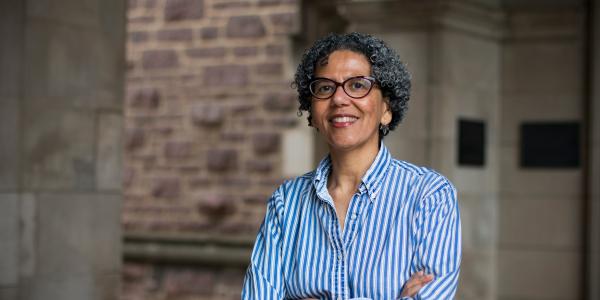The Ampersand sits down with Rafia Zafar, professor of English, African and African-American Studies, American Culture Studies, and faculty director of the Mellon Mays Undergraduate Fellowship Program. Zafar discusses her work, the history of St. Louis food, and the power of identity.
The Ampersand sits down with Rafia Zafar, professor of English, African and African-American Studies, American Culture Studies, and faculty director of the Mellon Mays Undergraduate Fellowship Program. Zafar discusses her work, the history of St. Louis food, and the power of identity.
Can you tell me more about Mellon Mays?
WashU has one of the oldest undergraduate fellowship programs. It was started to increase the number of faculty of color and underrepresented groups in the American professoriate. There are Mellon programs across the countries, in elite universities, public universities, and the historically black colleges and universities (HBCUs). It seeks to encourage and foster the rigor and the wonder of learning things—deep diving into an intellectual endeavor. A good percentage of Mellon students go on to doctoral programs and end up as faculty members. I’ve been advising since I got here, and this is the beginning of my 20th year. I’ve had advisees go on to faculty positions at Johns Hopkins and Queens Universities.
What sort of research are you doing?
I am currently teaching a course on passing—not just racial passing, in which people who appear white pretend to be so—but also how one can pass or slip out of one’s pre-destined identity. For example, we are reading The Great Gatsby, which can be considered a novel of social class passing.
I have a book in the pipeline on food studies, Recipes for Respect, which would not surprise students who have taken my Food and American literature course. That study looks at the way African Americans in the 19th and 20th centuries leveraged the role of author and knowledge of food to support civil rights and social mobility. So, I look at everything from early domestic manuals circa 1828-1847 to Black Power cookbooks from the 1970s. WashU’s Common Reader has published an excerpt of the book, on George Washington Carver.
Can you give one example?
One example would be George Washington Carver. When people think of Carver, they usually think of peanuts, but he was also an early advocate for organic farming and farm to table/fork eating. I write about that foresight. His moment is coming!
You talk about food and its relation to identity. How do you see identity playing a role in society today?
I was talking to one of my friends, and he was saying what is happening now is reminiscent of the 60s. A lot of the stuff going on reminds me of struggles and protests that we were having around then. Despite our best intentions, there always seems to be strife. The question is: how do we prevent such conflicts to the best of our abilities?
Identity politics can get fraught. Emotions get high, people demand to know where you stand. It’s important to keep the lines of communication open, to keep dialogue open. We need to all get together to move the needle forward. It can be difficult, but for all of the unrest and violence in the 60s, a lot of good things came out of it. You have to think that today’s actions are going to move things forward. It is that arc of justice. It might be bending really slowly right now, but I have to believe it is continuing to bend towards justice.
Food obviously plays an important role in your research. What do you think of the food in St. Louis?
I look at it like an ethnographer. When I first came to St. Louis, there were more layers of regional, black, and German food. In the Loop, there was a little place that had roll up windows, Mama’s Coal Pot; they served all kinds of Q, including barbequed snoot (pig’s nose)—you don’t see that much anymore!
There also used to be a number of German pretzel bakeries. There’s Gus’s, and now the fancier bakeries make pretzels, but there used to be old guys at intersections who had paper sacks of pretzels that they would buy and sell to you, like 2 for a dollar. And I loved that. I’m from New York, which is a city of street food. I remember walking with my dad and getting chestnuts from coal-fired kettles. There is a great scene in Invisible Man, where the narrator is walking past people selling yams on street, and he connects it with his black identity, stating, “I yam what I yam.”
One of the things you learn in food studies is that the cultural taste for a particular food is about the last thing you give up when you assimilate. Let’s say you marry someone from England and move to England. You change your name, your religion, etc. But the last thing to go is that desire to have fried chicken, collard greens, etc. The last hurdle is when you give up the food you grew up with.
What is your favorite part about teaching and working with students in Arts & Sciences?
It’s gotten a whole lot more diverse, both in terms of the student body and the faculty, and the University has committed to doing even more. The University is moving forward, and I think they want to continue to move forward—it’s really happening.
What is your favorite part about working so closely with students?
The students themselves! You are all bright. I like to tease you by calling you all strivers. I like being able to know my students, and to have one-on-one conversations with them. It has been a treat to have that liberal arts college feel, the programs I’m in, the classes I teach, and to have support for my research and scholarship. It’s a real one-two, knockout punch.





